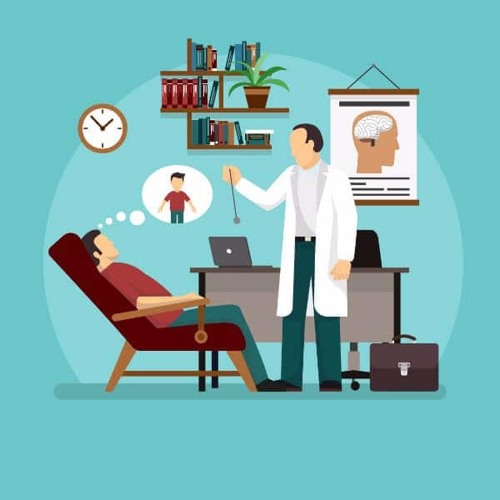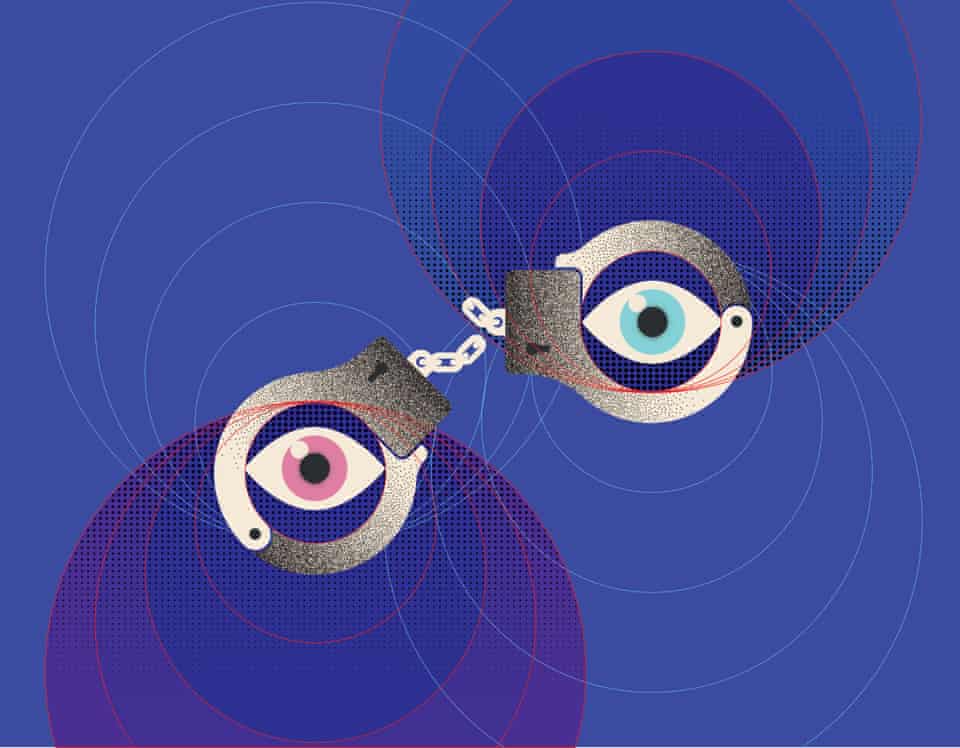
EMDR is a technique that focuses on the past and treats it in a way that makes it less distressing. They are very useful for treating past traumas such as sexual assault. Francine Shapiro was the one to discover the method, according to the American Psychological Association. She had PTSD and struggled with it. She used the method to treat both his childhood and combat-related memories. The results were less severe and more psychologically uplifting.
EMDR uses both the brain's sides to stimulate new neural pathways and remove neurological blockages that have been caused by trauma. This allows people to experience more accompaniments and emotions. It also helps to dissolve impasses between past traumas, and the gestalt process. Therefore, this technique is highly effective in helping people to overcome their emotional distress. It also helps them create a more hopeful future.

EMDR is effective for both small and large memories. These techniques work not only for traumas from the distant past, but also can help with smaller memories, like feeling rejected at school or excluded from a group. Even the most seemingly innocuous of events can carry residual negative effects. In addition, EMDR techniques can help clients to break cycles of self-sabotage and feel worthy of praise.
The EMDR technique can also help people deal with trauma-related disorders such as depression, anxiety, and eating disorders. The techniques are effective for overcoming these problems and are becoming an increasingly popular approach. It has been shown to be effective for those who are unable or unwilling to face difficult situations. Many people have been able to overcome their fears and anxieties with EMDR. EMDR can be used by anyone, even if they have been the victims of a trauma.
EMDR techniques can help reduce the intensity and duration negative symptoms. The therapy is useful for people with phobias as well as PTSD. EMDR techniques are better than short-term therapy for trauma that has been ongoing. They are also useful for those who have experienced multiple traumas. These techniques are effective in helping people to cope with trauma and allow them to get back to their everyday lives.

Although EMDR techniques are beneficial for everyone, they work best for people who have suffered multiple traumas. EMDR therapy might be the best choice for you if you have suffered multiple traumas. You can also try EMDR online. The online version is very similar to the in-person sessions. However, you will need to follow the instructions of the therapist and use a screen. The therapist will then ask for you to perform a task known as tapping.
People with complex psychological disorders can benefit from EMDR. These techniques integrate traumatic memories with thoughts. Some therapists recommend that EMDR be integrated into other therapies. The process of recalling a memory is highly personal. After completing EMDR, patients will have no trouble processing the memories. The therapist will help them to relive the trauma in their own lives.
FAQ
What are the ten best foods to eat in America?
The 10 best foods to eat include:
-
Avocados
-
Berries
-
Broccoli
-
Cauliflower
-
Eggs
-
Fish
-
Grains
-
Nuts
-
Oats
-
Salmon
Is cold a sign of a weak immune response?
Cold causes a decrease in immune system strength. This is because white blood cells are less effective at fighting infection. Cold can also make you feel better as your body releases endorphins to your brain, which reduce pain.
Is cold an indication of a weaker immune system?
There are two types of people in the world: those who love winter and those that hate it. You may wonder why you feel so bad when it's cold, regardless of whether you love it or hate it.
The truth is that our bodies are built to work best when it's warm. Because of this, our bodies evolved to thrive and survive in hot climates.
However, our environment is quite different than that of our ancestors. We spend a lot more time indoors, and are often exposed at extreme temperatures (cold and hot), and we eat processed foods over fresh.
Our bodies aren’t accustomed to such extremes. So, when we do venture outside, we often feel exhausted, sluggish, or even sick.
There are many ways to avoid these side effects. Keep your body hydrated. If you drink plenty of water, you'll help keep your body properly hydrated and flush toxins from your system.
Another important step is to ensure that you're eating healthy meals. Healthy food will help your body maintain its optimal temperature. This is particularly helpful for anyone who spends long periods of time inside.
You can also meditate for a few minutes every day. Meditation can relax your mind and make it easier manage stress and illness.
Here are 7 ways to live a healthy lifestyle.
-
Be healthy
-
Exercise regularly
-
Sleep well
-
Drink lots of water
-
Get enough sleep
-
Be happy
-
Smile often.
How do I know what's good for me?
You must listen to your body. When it comes to your body's needs for exercise, food, or rest, it is the best. It's important to pay attention to your body so you don't overdo things. You must listen to your body to ensure you are healthy.
Statistics
- This article received 11 testimonials and 86% of readers who voted found it helpful, earning it our reader-approved status. (wikihow.com)
- WHO recommends consuming less than 5% of total energy intake for additional health benefits. (who.int)
- Extra virgin olive oil may benefit heart health, as people who consume it have a lower risk for dying from heart attacks and strokes according to some evidence (57Trusted Source (healthline.com)
- The Dietary Guidelines for Americans recommend keeping added sugar intake below 10% of your daily calorie intake, while the World Health Organization recommends slashing added sugars to 5% or less of your daily calories for optimal health (59Trusted (healthline.com)
External Links
How To
What does the word "vitamin" mean?
Vitamins are organic substances found naturally in food. Vitamins aid us in absorbing nutrients from the food we eat. Vitamins cannot be produced by the body. They must be acquired from food.
There are two types: water-soluble and fat-soluble vitamins. Water-soluble vitamins dissolve easily when they are dissolved in water. Some examples include vitamin C,B1 and B2 vitamins (thiamine), B2 and riboflavin, B3 and B6 vitamins (niacin), folic acids, biotin, pantothenic acids, and cholesterol. Fat-soluble vitamins are stored in the liver, fatty tissue and kidneys. Some examples include vitamin D and E, K, A and beta carotene.
Vitamins are classified according to their biological activity. There are eight major types of vitamins:
-
A - Vital for normal growth and maintaining good health.
-
C – essential for proper nerve function.
-
D - Vital for healthy bones and teeth
-
E is necessary for good vision, reproduction.
-
K – Required for healthy nerves & muscles.
-
P – vital for building strong bones.
-
Q - aids digestion and absorption of iron.
-
R is required for the production of red blood cells.
The recommended daily intake (RDA), of vitamins varies with age, gender and physical condition. The U.S. Food and Drug Administration (FDA) sets the RDA values.
For adults over 19 years, the RDA is 400 mg per day for vitamin A. For fetal development, pregnant women need 600 mg per day. Children ages 1-8 require 900 micrograms per day. For infants younger than one year, 700 micrograms are required daily. However, this number drops to 500 micrograms each day for children aged 9-12 months.
Children between the ages 1--18 years old who are overweight or obese require 800 micrograms per Day, while those who are overweight or obese need 1000 micrograms. To meet their nutritional needs, children underweight and obese require 1200 micrograms a day.
Children 4-8 years old who have anemia must consume 2200 micrograms of Vitamin C daily.
2000 micrograms daily is required for adults over 50 to maintain their general health. Breastfeeding or pregnant women require 3000 micrograms per daily due to higher nutrient demands.
Adults over 70 require 1500 micrograms each day, since they lose around 10% of their muscle mass every decade.
Women who have been pregnant or are lactating require more than the RDA. Pregnant women need 4000 micrograms per dayduring pregnancy and 2500 micrograms per day after delivery. Breastfeeding mothers need 5000 micrograms per day when breast milk is being produced.